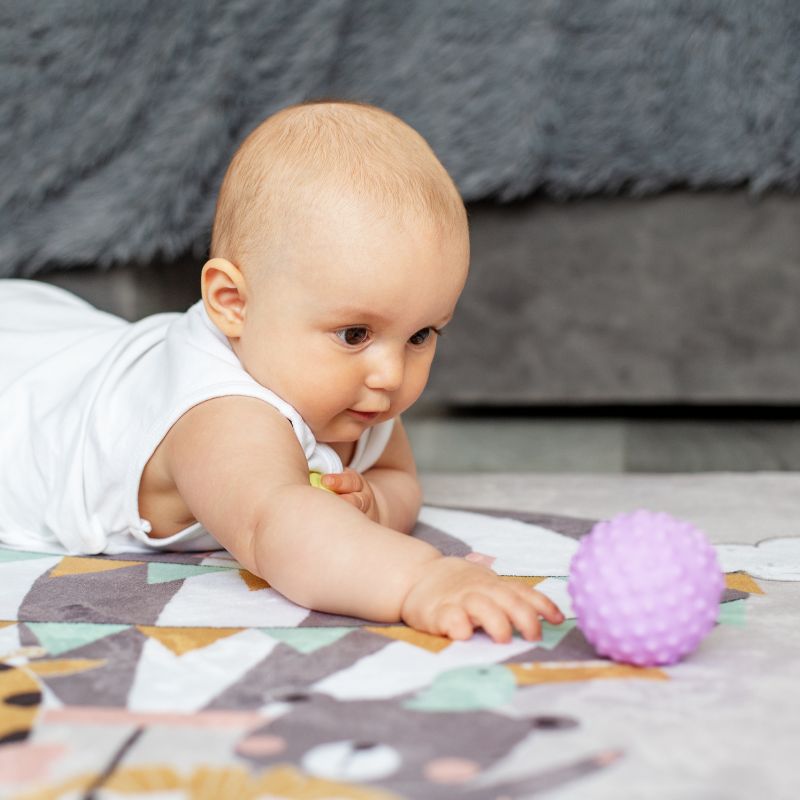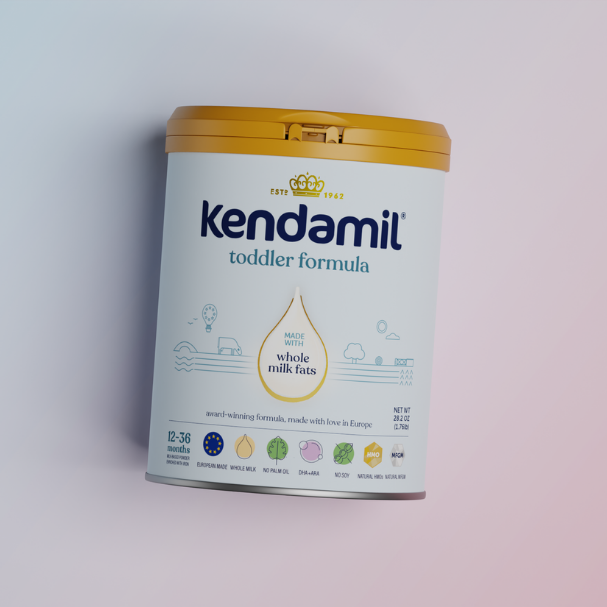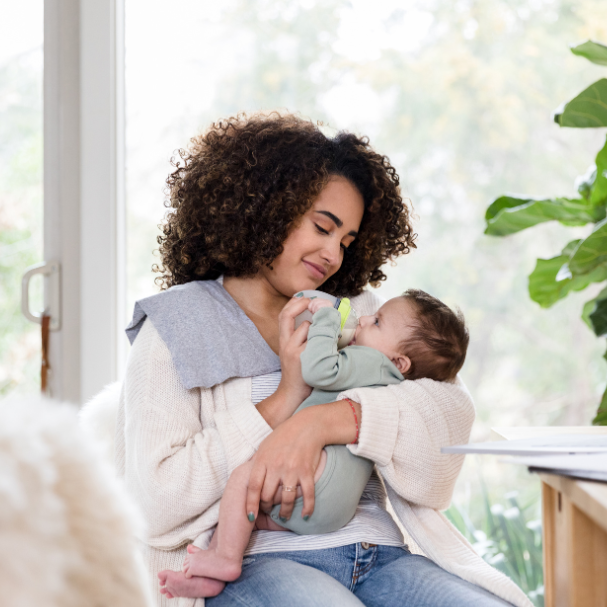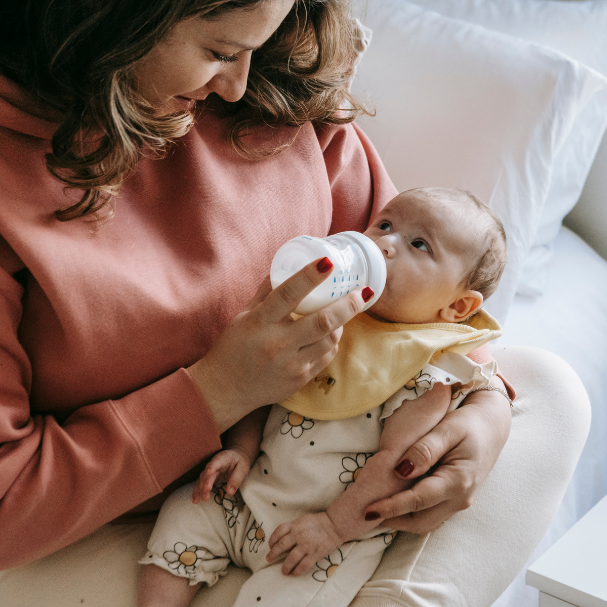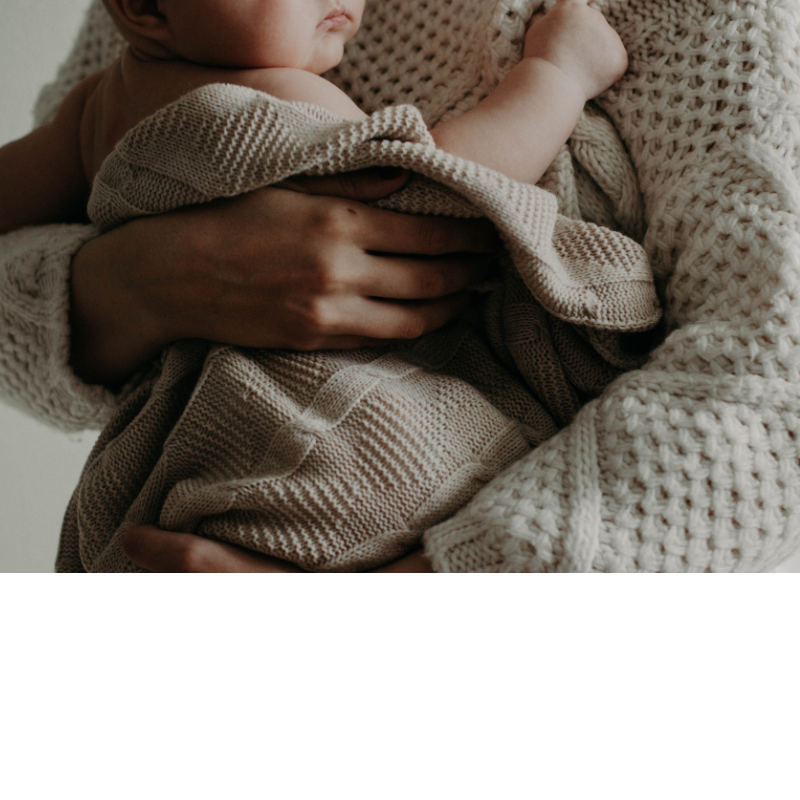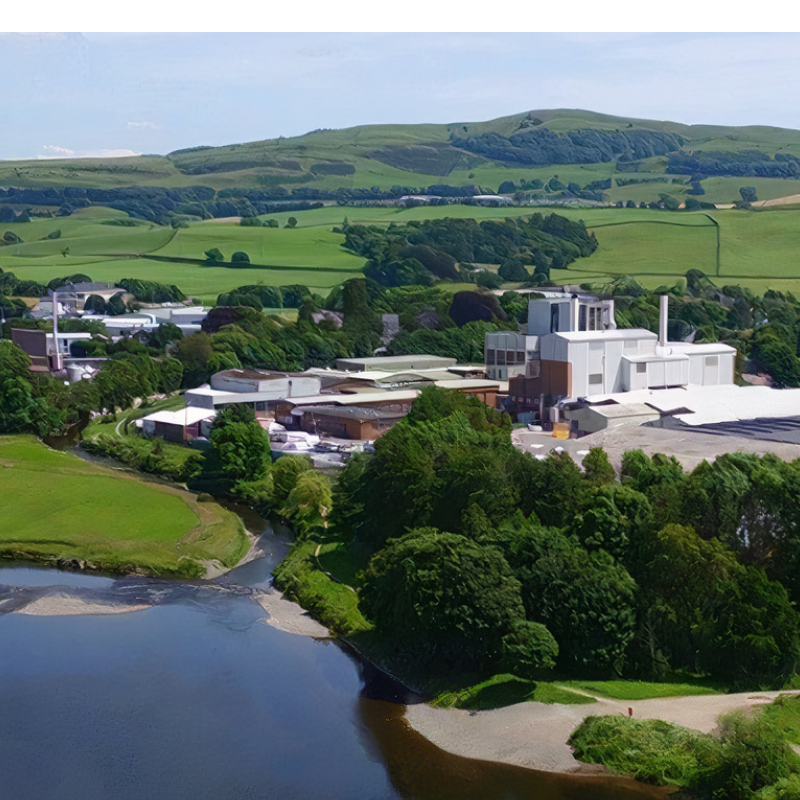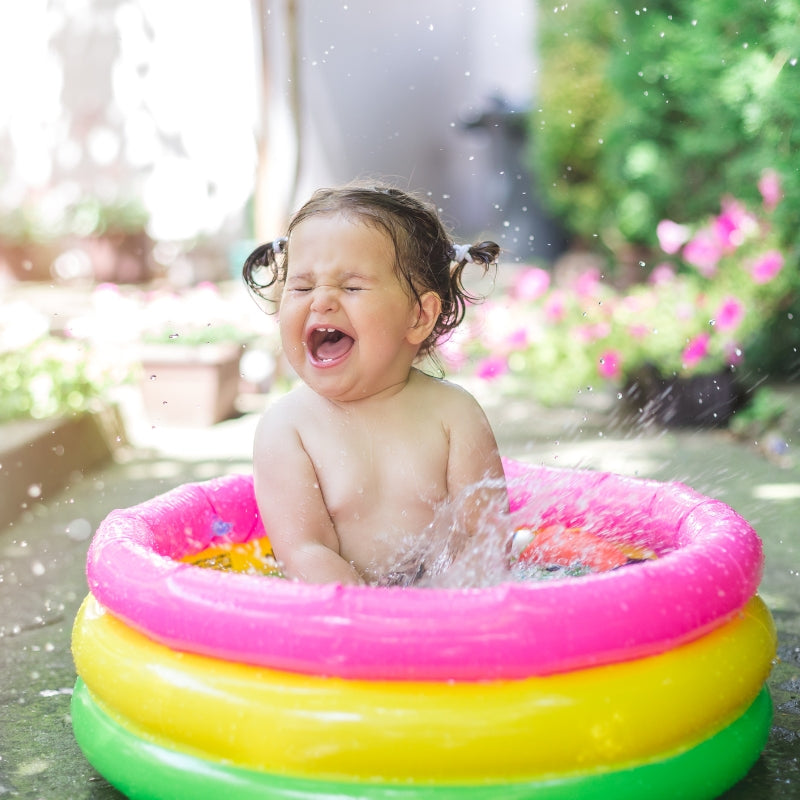Welcoming a newborn into the world is an exciting but overwhelming time, with lots of things for new parents to learn. Understanding your baby’s developmental milestones and learning how to engage with them through play can help create not only a stronger bond, but will also support their growth.
So let us take you through some key milestones you’ll want to look out for, as well as some practical tips and fun activities for you and your newborn to enjoy together.
Developmental milestones checklist 0-6 months
Tracking your baby's developmental milestones is a wonderful way to understand and support their growth. Let’s go through their physical milestones, their social and emotional milestones as well as their speech and language milestones.
Physical Development in the First Month:
- Reflexes: Newborns are born with several reflexes, including the rooting reflex (turning their head toward anything that strokes their cheek) and the grasp reflex (clutching anything placed in their palm).
- Movements: While they might seem random, newborns make jerky, uncontrollable movements as their nervous system develops.
- Growth: Expect your baby to grow rapidly, gaining about 5-7 ounces per week and increasing in length by about 1.5 inches by the end of the first month.
- Vision: Newborns can focus on objects about 8-12 inches away, roughly the distance to your face when feeding.
Physical Milestones
0-3 Months:
- Rolling Over: Around 2-3 months, babies might start to roll from their tummy to their back.
- Grasping: Babies will begin to open and close their hands and bring them to their mouth.
- Head Control: By 3 months, many babies can lift their head and chest when lying on their stomach and support their upper body with their arms.
4-6 Months:
- Rolling Over: By 4-6 months, babies typically can roll both ways (front to back, back to front).
- Sitting: Around 6 months, many babies can sit without support.
- Reaching and Grasping: Babies will begin to reach for and grasp objects, transferring them from one hand to the other.
Social and Emotional Milestones
0-3 Months:
- Smiling: Social smiles start to appear around 6-8 weeks as babies begin to respond to their environment.
- Cooing: Babies start making cooing sounds, which are their first attempts at vocal communication.
- Recognizing Faces: Newborns quickly learn to recognize their parents' faces and voices, showing a preference for familiar people.
4-6 Months:
- Laughing: Around 4 months, babies often start laughing in response to interactions and play.
- Expressing Emotions: Babies begin to show a range of emotions, including joy, anger, and frustration.
- Social Play: Engaging in social play becomes more interactive as babies enjoy games like peek-a-boo and respond to their name.
Speech and Language Milestones
0-3 Months:
- Cooing and Gurgling: Babies will begin to make cooing and gurgling sounds, experimenting with their vocal cords.
- Responding to Sounds: They start to turn their head towards familiar voices and sounds.
- Crying: Different types of cries develop, signalling different needs such as hunger, discomfort, or tiredness.
4-6 Months:
- Babbling: By 4-6 months, babies start babbling, combining consonants and vowels like “ba-ba” or “da-da.”
- Imitating Sounds: Babies begin to mimic sounds they hear frequently, starting to learn the rhythm and melody of their native language.
- Increased Vocalization: More varied sounds and intonations appear as babies experiment with their voice.
Early years expert Becca, walks us through 0-12 months development milestones.
How can I play with my newborn to help their development?
There’s lots of benefits to playing with your little one in order to help their development. Play is actually a crucial part of your baby’s growth. Through play, babies learn about the world around them, develop essential motor skills, and start forming emotional bonds. Here are some engaging activities to boost your newborn's development.
- Tummy Time: Tummy time is essential for your baby's physical development. It helps strengthen the neck, shoulders, arms, and back muscles. Start with just a few minutes a day and gradually increase the duration as your baby grows stronger. Always supervise your baby during tummy time, and try placing a soft blanket on the floor with a few toys within their reach to encourage reaching and grasping.
- Baby Massage: Gentle massage can help your newborn relax, improve circulation, and promote bonding. Use a baby-safe oil or lotion and softly massage their arms, legs, back, and tummy. This activity can also help with digestion and relieve colic symptoms. Make sure the room is warm and comfortable, and talk or sing to your baby during the massage to engage their auditory senses.
- Gentle Exercise: Gently moving your baby's arms and legs in a bicycling motion can help strengthen their muscles and improve coordination. You can also encourage them to grasp your fingers or small toys, which promotes fine motor skills. These simple exercises are not only beneficial for physical development, but also a fun way to interact with your baby.
Fun and easy activities for newborns
Sensory play is vital for newborns as it helps build nerve connections in the brain, encouraging your baby to engage in and explore their environment. Here are some sensory play ideas for babies 0-6 months.
0-2 Months:
- Gentle Music: Play soft, calming music or lullabies to help soothe and engage their sense of hearing. You can also sing to them.
- Soft Textures: Introduce them to different soft textures like silk, cotton, or fleece. Gently brush these materials against their skin to provide a tactile experience.
- Mobiles: Hang a mobile with high-contrast colours and patterns above their crib. Ensure it's placed within their visual range (about 8-12 inches away).
2-4 Months:
- Mirror Play: Place a baby-safe mirror near them during tummy time. Babies love looking at their reflection, which helps in visual and social development.
- Tummy Time Mats: Use colourful tummy time mats with various textures and toys attached. This encourages reaching, touching, and exploring.
- Gentle Massage: Give your baby a gentle massage using baby-safe lotion. This helps in bonding and provides a calming tactile experience.
4-6 Months:
- Water Play: Fill a shallow basin with a small amount of water and let them splash and feel the water with their hands. Always supervise closely.
- Sensory Bottles: Create sensory bottles filled with colourful water, glitter, and small objects. Seal the bottles tightly and let your baby shake and observe the moving contents.
- Taste Safe Paint: Make edible paint using yogurt mixed with natural food coloring. Place a small amount on a highchair tray and let them explore the texture and colours safely.
What are the best toys for a 0-3 month old baby?
Best toys for 0-3 month olds:
You don’t always need to buy new toys to stimulate your baby’s senses. Everyday household items can be just as effective! Think wooden spoons, pots and pans, scarves & little mirrors. Whether it's homemade fabric blocks, DIY rattles, or homemade mobiles, there are countless ways to entertain and stimulate your little one.
- Soft Fabric Blocks: Soft fabric blocks are perfect for little hands to grasp and explore. They can be made at home using old fabric scraps or even socks filled with cotton, securely tied at the ends. These homemade blocks provide tactile stimulation.
- Rattles: Rattles are excellent for stimulating a newborn's auditory senses. You can create your own by filling small, clean containers (such as plastic bottles) with dried rice or beans and sealing them tightly. Ensure the lids are secure to prevent choking hazards.
- High-Contrast Cards: High-contrast images are visually stimulating for newborns. You can easily make your own by drawing bold black and white patterns on index cards or cardboard. Place them within your baby's line of sight during tummy time.
- Texture Balls: Texture balls encourage sensory exploration and fine motor development. Take a variety of household materials such as cotton balls, sponges, and textured fabrics, and wrap them tightly with a piece of cloth or secure them in a mesh bag. Your baby will enjoy feeling the different textures as they manipulate the balls.
- DIY Mobile: Create a simple mobile using lightweight objects such as paper cutouts or soft toys hung from a string or embroidery hoop. Hang it securely above your baby's play area, ensuring it's out of reach (always supervise). Gentle movement and visually appealing objects will captivate your newborn's attention.
How to choose safe toys for newborns:
When choosing toys for newborns in the U.S, ensure they are age-appropriate and free of small parts to avoid choking hazards. Opt for toys made from non-toxic, BPA-free materials with smooth, rounded edges and sturdy construction. Select items that are easy to clean, preferably machine washable or wipeable, and avoid those with strings, cords, small magnets, or batteries.
But with all this said, here's the real magic ingredient: you. Your touch, your voice, your presence—it's all your baby needs to feel safe, loved, and ready to explore the world. So, don't stress about doing everything perfectly. Just be there, be present, and enjoy these precious moments together.



